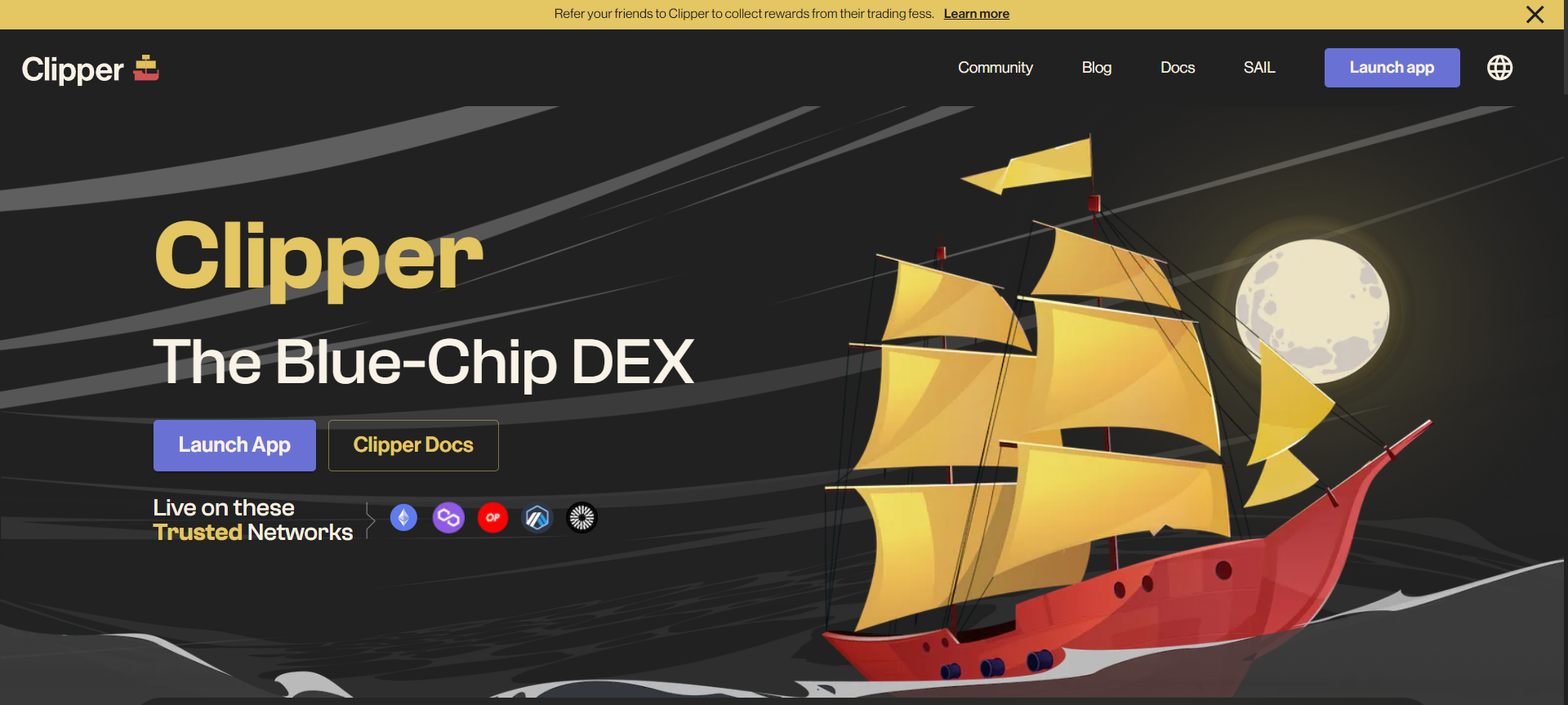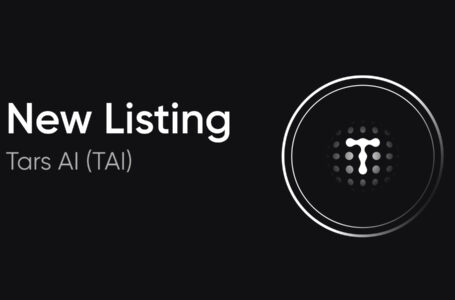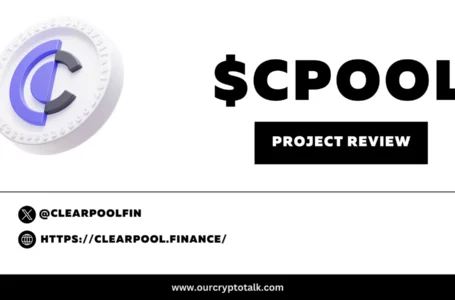
About Clipper
Clipper is a DEX designed for blue-chip tokens (e.g., ETH, WBTC, USD stablecoins, etc.) and no impermanent loss. Blue-chip tokens comprise 70% of all on-chain trading volume. The novel architecture makes money for LPs using the same arbitrage strategy used by professional market makers, but implemented in a permissionless and non-custodial manner. In contrast to most DEXs, Clipper’s LP yields are not generated from fees.
They computes prices off-chain using a sophisticated formula that incorporates low-latency price feeds from centralized exchanges along with a snapshot of on-chain state. It then uses on-chain proofs to validate prices and preserve permissionlessness.
This allows to make money from arbitrage, instead of paying a tax to arbitrageurs, while keeping gas fees low for traders. On The, liquidity providers take home superior yields with no impermanent loss and traders can expect no whales or bots front-running their trades. Clipper was initially developed by Shipyard Software and licensed to AdmiralDAO.
How Clipper Makes Money for LPs
Clipper makes money for LPs through arbitrage. This requires significantly more sophisticated formulas than can be supported on-chain, given gas prices and block time constraints.
Thus, Clipper does not rely on the Constant Product Market Maker (CPMM) used by most DEXs. Instead, Clipper has a unique architecture called the Formula Market Maker (FMM), which enables off-chain computation without compromising custody.
FMM Architecture
Clipper’s FMM is a hybrid mechanism that has both on-chain and off-chain components. It can utilize any formula that is part of the invariant function family developed in Shipyard’s original whitepaper on market making. Unlike CPMMs whose pricing formulas only consider token ratios in pools, the FMM pricing function utilizes both token ratios and external real-time market prices from centralized and decentralized oracles.
Clipper’s FMM performs pricing computations off-chain then verifies and validates them on-chain to prevent malicious quotes and determine if there have been any significant price changes between the time pricing data was pulled off-chain and applied to an on-chain swap. This design is highly efficient–keeping the hard work of solving formulas off-chain and verifying them on-chain avoids high gas costs while keeping the entire system trustless and transparent.
While the above describes how the FMM operates on the Polygon, Optimism, and Arbitrum versions of Clipper, on Ethereum it performs the comparative price computations and validations off-chain against the on-chain data. This further reduced Clipper’s gas usage on Ethereum, resulting in even lower gas costs for both traders and LPs—both relative to the previous iteration and other leading DEXs.
No Impermanent Loss
There’s a major misconception that impermanent loss (IL) is an unavoidable feature of DEX liquidity pools. The misconception came about because most DEXs utilize a CPMM. CPMMs are inherently prone to IL due to how they balance liquidity pool assets.
Tokens on CPMM-based DEXs are priced by a constant function (x*y=k) and IL is caused by arbitrageurs exploiting discrepancies between the prices set by the CPMM and external market prices. While arbitrage activity keeps CPMM prices in line with the rest of the market, the profit arbitrageurs extract is siphoned from LP holdings.
How LPs Earn from Arbitrage
Rather than from trading fees, Clipper generates LP returns by pursuing a statistical arbitrage strategy similar to many traditional finance asset managers. However, it does so permissionlessly according to a formula that anyone can observe, predict, and verify for themselves. This ensures composability and enables non-custodial liquidity.
The specific strategy is a Daily Rebalancing Portfolio (DRP). This is a common strategy for commodities trading.
Daily rebalancing works whenever assets have high daily volatility and mean reversion relative to monthly/yearly volatility. This is because daily rebalancing has the effect of systematically buying low and selling high each day. It generates profits each day, which are the source of yield for Clipper LPs. This is a well-researched phenomenon that earned Harry Markowitz the in Economics in 1990.
Why Clipper Has Better Trading Prices
Because Clipper generates more efficient returns for LPs, it can afford to offer better prices to traders. With ~$10M in liquidity (TVL), Clipper has best prices trades up to $10k. As TVL grows, Clipper will have best prices on larger trades–e.g., $50M TVL would correspond to best prices on trades up to $50k.
Below are the results of a sampling study against 0x API for a $10K USDC<>ETH trade over several days in August 2023. The results show Clipper beat 0x 92.5% of the time on both legs of the trade and 99.6% of the time on at least one leg.
DAO Governance
Clipper is governed by AdmiralDAO. AdmiralDAO is a decentralized autonomous organization governed by the community and supported by Admiralty LLC, a non-profit member-managed LLC domiciled in the Marshall Islands. The DAO controls a multisig wallet with several signers.
Features
Governance Rights
Holders of Point SAIL tokens have voting rights within AdmiralDAO, allowing them to participate in decision-making processes regarding Clipper.Exchange and other protocols governed by AdmiralDAO. This includes voting on protocol upgrades, parameter adjustments, and other governance proposals.
Protocol Control
Point SAIL tokens give holders the power to influence the direction and development of Clipper.Exchange and associated protocols. This control extends to decisions on fee structures, asset listings, and other operational aspects of the platforms.
Staking and Rewards
Point SAIL token holders may have the opportunity to stake their tokens in exchange for rewards. These rewards could come in various forms, such as protocol fees, governance rewards, or other incentives designed to encourage active participation and engagement in the AdmiralDAO ecosystem.
Community Engagement
Holding Point SAIL tokens grants access to the AdmiralDAO community, providing a platform for collaboration, discussion, and engagement with other participants in the ecosystem. This community aspect fosters a sense of belonging and collective ownership among token holders.
Incentive Alignment
The distribution and use of Point SAIL tokens align the incentives of token holders with the long-term success and sustainability of AdmiralDAO and its associated protocols. By tying governance rights and rewards to token ownership, AdmiralDAO incentivizes stakeholders to act in the best interests of the ecosystem as a whole.
Transparency and Accountability
Point SAIL token holders can hold the protocol’s decision-makers accountable through transparent governance processes. The open nature of governance discussions and voting mechanisms ensures that decisions are made with input from the community and in accordance with the collective will of token holders.
Bottom Line
In conclusion, Point SAIL stands as the utility governance token at the heart of AdmiralDAO’s ecosystem. Through its governance rights, holders of Point SAIL tokens wield influence over the direction and development of Clipper.Exchange and other protocols governed by AdmiralDAO. By providing opportunities for staking, rewards, and community engagement, Point SAIL aligns the incentives of stakeholders with the long-term success of the ecosystem.
With transparency and accountability as guiding principles, Point SAIL empowers token holders to actively participate in shaping the future of decentralized governance within AdmiralDAO. Thus, Point SAIL plays a pivotal role in facilitating decentralized decision-making and fostering community collaboration within the AdmiralDAO ecosystem.


















